In 1946, the scientist paleontologist Charles Whitney Gilmore looked through the found fossils of tyrannosauroids (* ) in order to further classify and study them. The wandering gaze of a paleontologist full of scientific curiosity and enthusiasm inherent in great scientists, explorers and inventors fell on a small but almost complete skull from Montana, which lay among the numerous fossils. He had no idea that this skull belonged to the most missed prehistoric predator, which will have a very long history of discoveries ahead (Fig. 1).
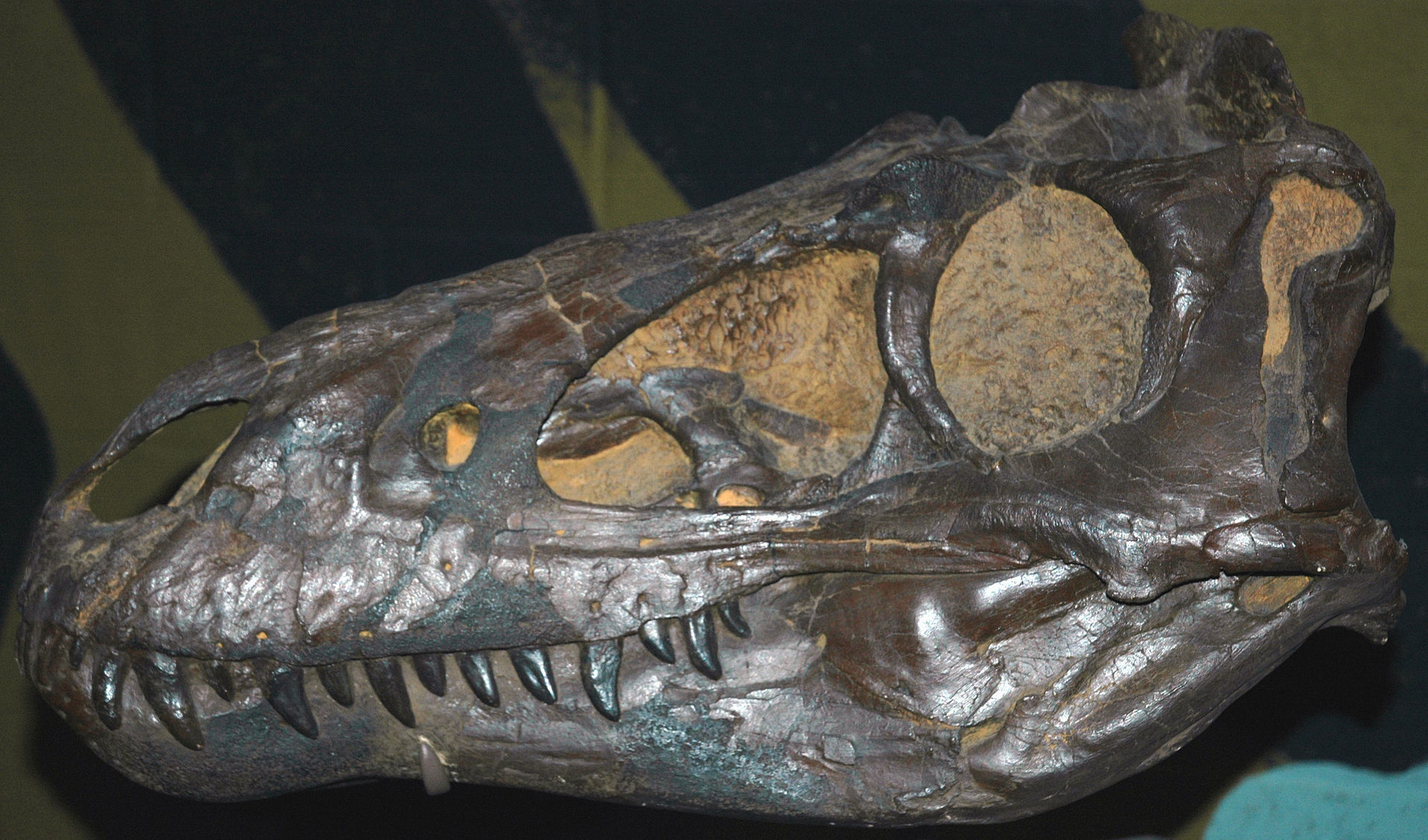
This skull was 60 centimeters long and had the typical grin of known tyrannosaurids (**) . Since the analogs of the new skull, at least comparable in size and shape to the elongation of the muzzle, Charles met only among the albertosaurins (***), he suggested that the specimen he classified comes from this subfamily.
In the same year, the scientist assigned the number CMNH 7541 to this skull, which he classified as one of the species of the Gorgosaurus (G. lancensis) [1]. After the acquisition of the specific name, the skull ceased to interest the scientist and was deposited for many and many years in the dusty box of the museum, along with the rest of the described samples, until, quite by accident, when re-counting fossils, it was stumbled upon in 1988 by another great paleontologists - Robert Thomas Bakker and Phil Curry. Actually, having examined this skull, they realized that it was not at all a Gorgosaurus, since the “face muzzle” was not at all typical for it (Fig. 2).
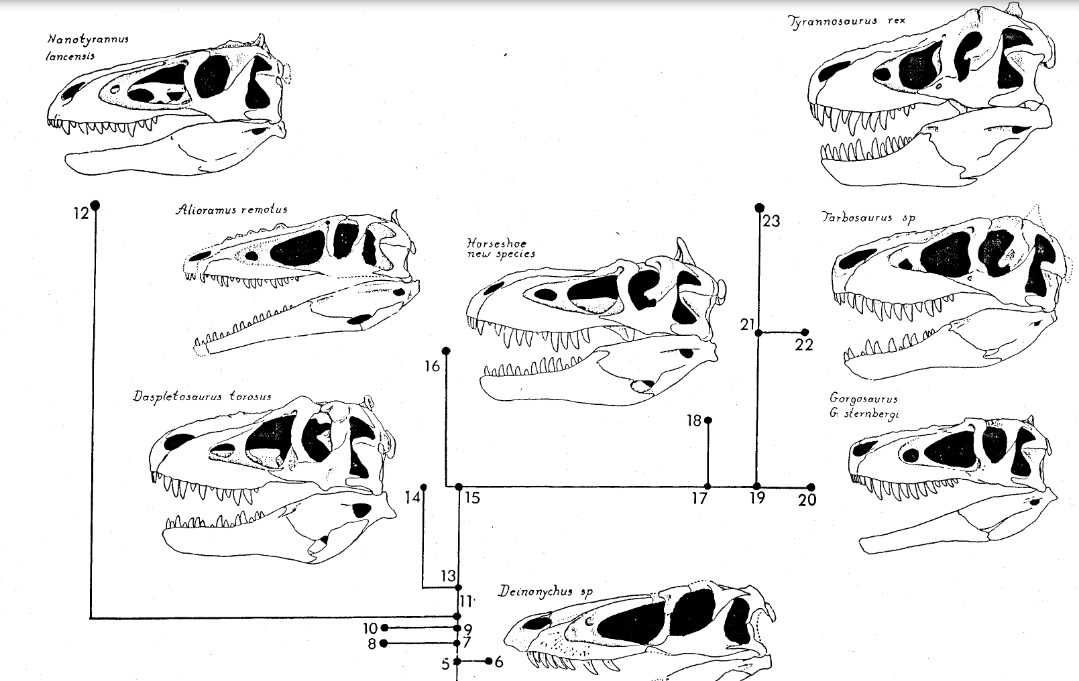
, , — (****). « » , (.3).
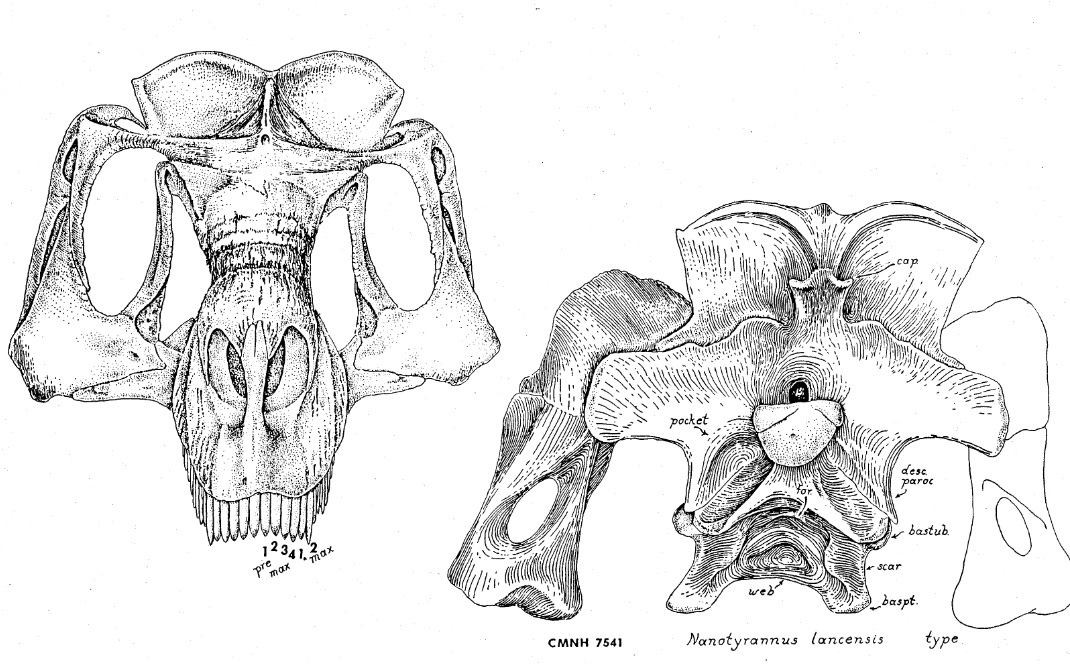
, , , . , , « » - , , 5,2 [2].
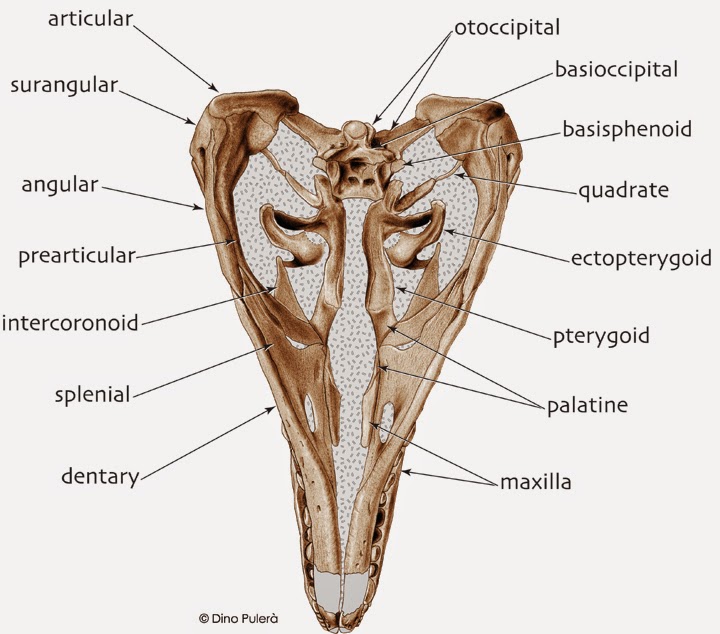
, , , 1999 , , , [3] (.4). , - ?
2001 , «», , . , 2005 ( . 5).

, , (N. Lancensis) , , «» , , [4;5;6]. , , N. lancensis , .
, . , , Stygivenator, , [7;8] (.6).
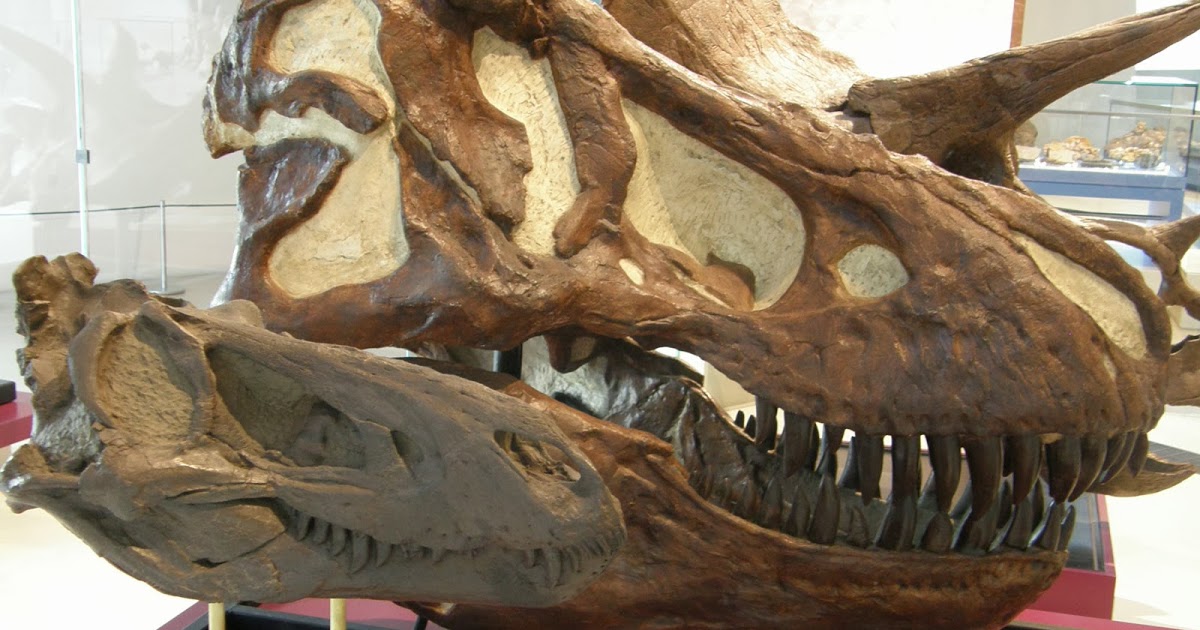
. , , [9] , , , , [10].
, , 2016 , , . , , (.7) [11].
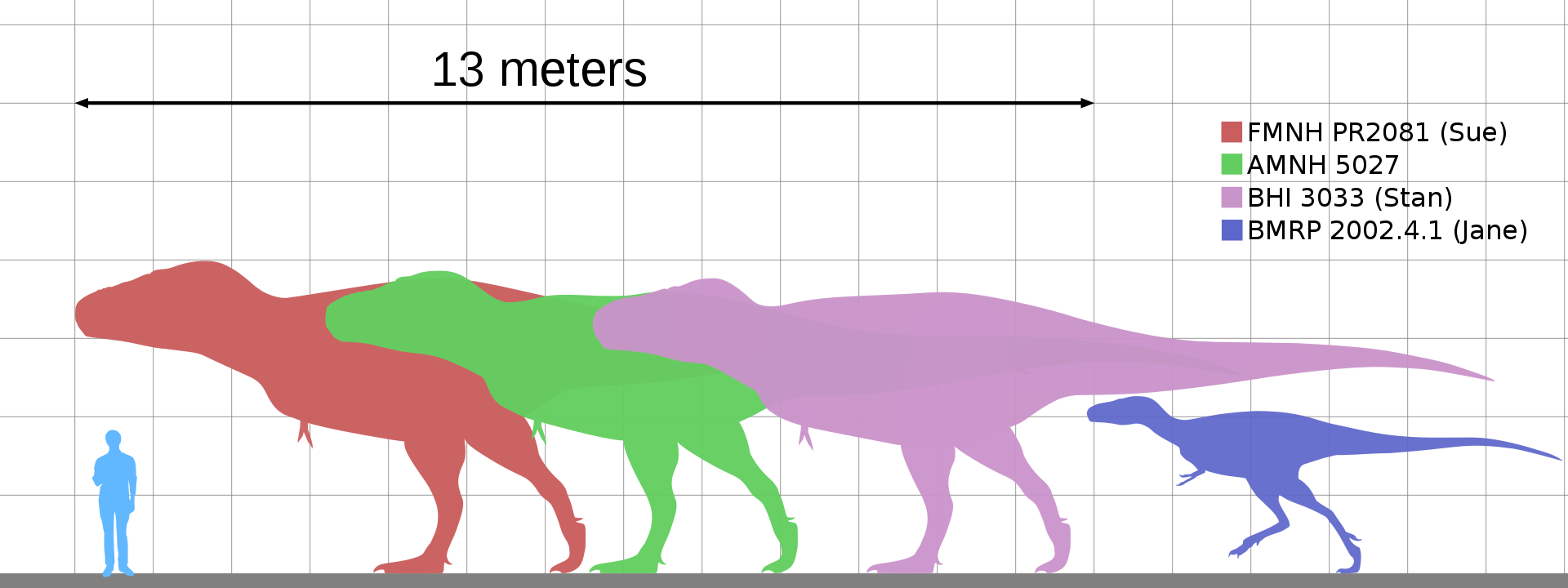
, . , [12]. , , () (.8). 2020 . , , , .

«» . , , , , , , [13] (.9).
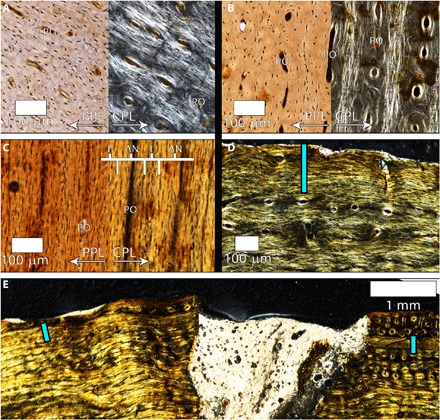
, , CMNH 7541 . .. 13 80 . 44 , , , [14].
, , (), , , , , (.10).
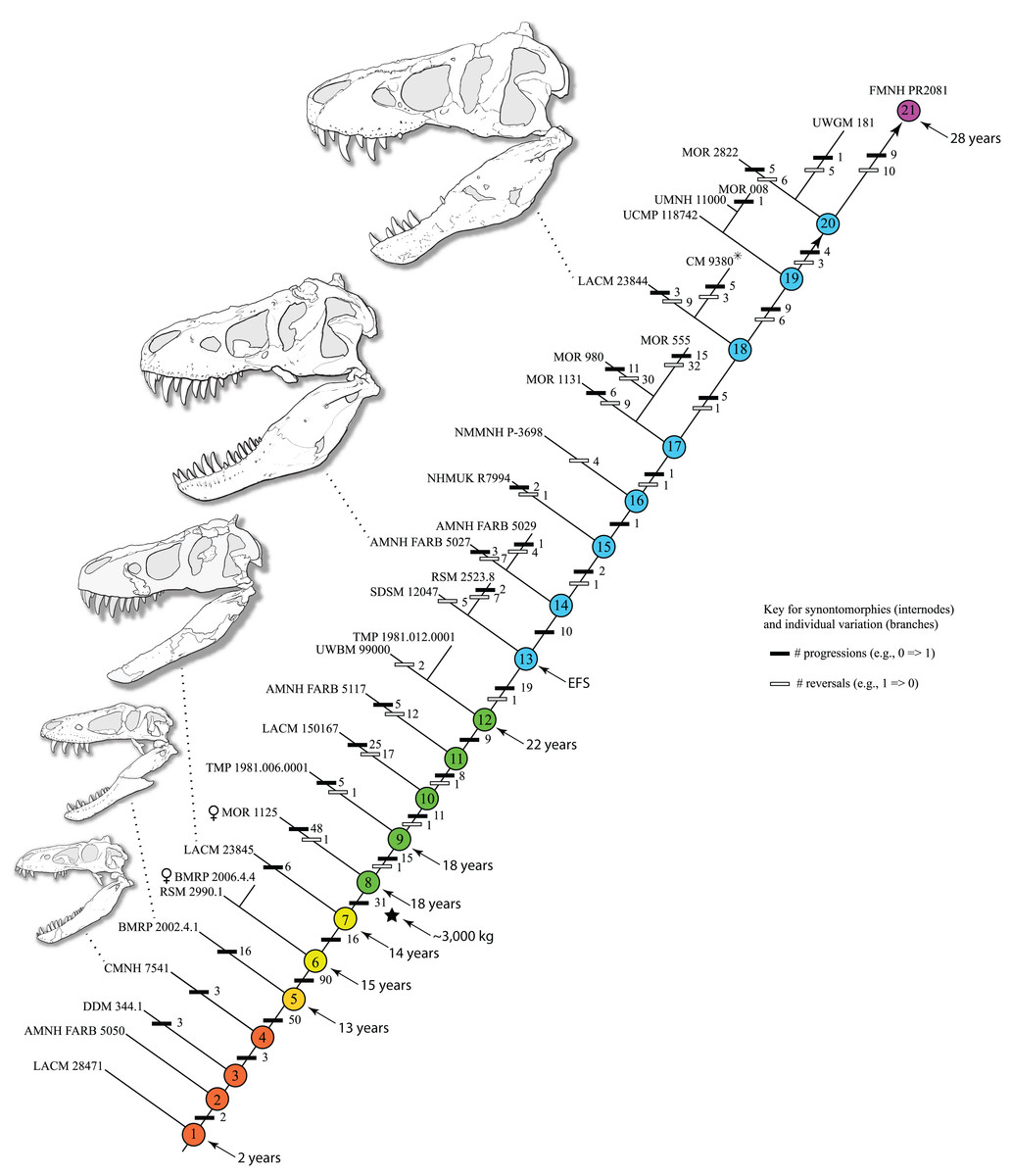
, «» , , .. [15].
. , . , !
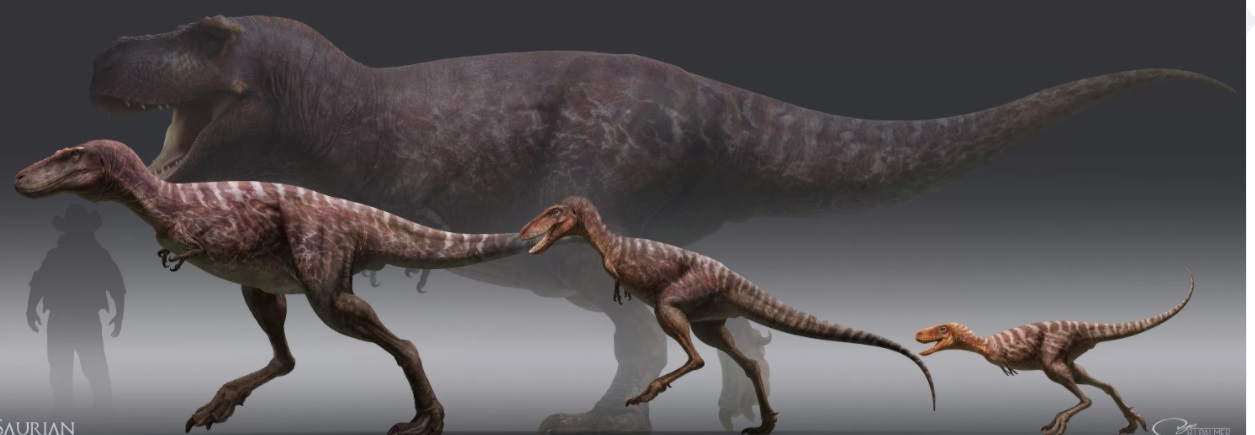
:
.
(*) (Tyrannosauroida), — ( ) ( ) — , (Tyrannosauridae), . , .
(**) (Tyrannosauridae) — , : (Albertosaurinae) (Tyrannosaurinae).
(***) — : (Albertosaurus) (Gorgosaurus)
(****) — - , — Tyrannosaurus rex. , , .
:
1) Gilmore, C. W. (1946). «A new carnivorous dinosaur from the Lance Formation of Montana». Smithsonian Miscellaneous Collections. 106: 1–19
2) Bakker, R.T.; Williams, M.; Currie, P.J. (1988). «Nanotyrannus, a new genus of pygmy tyrannosaur, from the latest Cretaceous of Montana. » Hunteria. 1: 1–30
3) Carr, T.D. (1999). «Craniofacial ontogeny in Tyrannosauridae (Dinosauria, Coelurosauria). » Journal of Vertebrate Paleontology. 19 (3): 497–520
4) Currie, P.J. (2003a). «Cranial anatomy of tyrannosaurid dinosaurs from the Late Cretaceous of Alberta, Canada». Acta Palaeontologica Polonica. 48: 191–226
5) Currie, Henderson, Horner and Williams (2005). «On tyrannosaur teeth, tooth positions and the taxonomic status of Nanotyrannus lancensis. » In «The origin, systematics, and paleobiology of Tyrannosauridae», a symposium hosted jointly by Burpee Museum of Natural History and Northern Illinois University.
6) Henderson (2005). «Nano No More: The death of the pygmy tyrant. » In "The origin, systematics, and paleobiology of Tyrannosauridae», a symposium hosted jointly by Burpee Museum of Natural History and Northern Illinois University.
7) Currie, P.J. (2003a). «Cranial anatomy of tyrannosaurid dinosaurs from the Late Cretaceous of Alberta, Canada». Acta Palaeontologica Polonica. 48: 191–226.
8) Larson P (2013), «The validity of Nanotyrannus Lancensis (Theropoda, Lancian – Upper Maastrichtian of North America», Society of Vertebrate Paleontology: 73rd annual meeting, Abstracts with Programs, p. 159.
9) Carr, T.D. (1999). «Craniofacial ontogeny in Tyrannosauridae (Dinosauria, Coelurosauria) ». Journal of Vertebrate Paleontology. 19 (3): 497–520
10) Tsuihiji, T.; Watabe, M.; Tsogtbaatar, K.; Tsubamoto, T.; Barsbold, R.; Suzuki, S.; Lee, A.H.; Ridgely, R.C.; Kawahara, Y.; Witmer, L.M. (2011). «Cranial osteology of a juvenile specimen of Tarbosaurus bataar from the Nemegt Formation (Upper Cretaceous) of Bugin Tsav, Mongolia». Journal of Vertebrate Paleontology. 31 (3): 497–517.
11) https://www.ncbi.nlm.nih.gov/pmc/articles/PMC4728391/
12) http://mambobob-raptorsnest.blogspot.com/2016/03/hind..
13) https://www.ncbi.nlm.nih.gov/pmc/articles/PMC6938697/
14) https://peerj.com/articles/9192/
15) https://peerj.com/blog/post/115284882629/a-high-resol ..